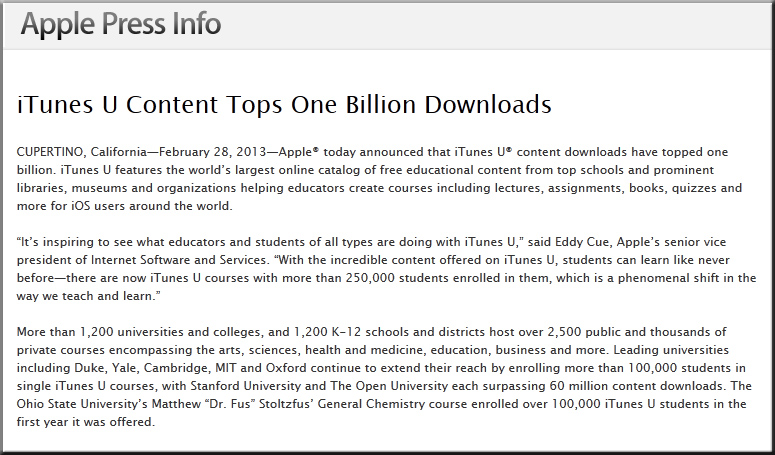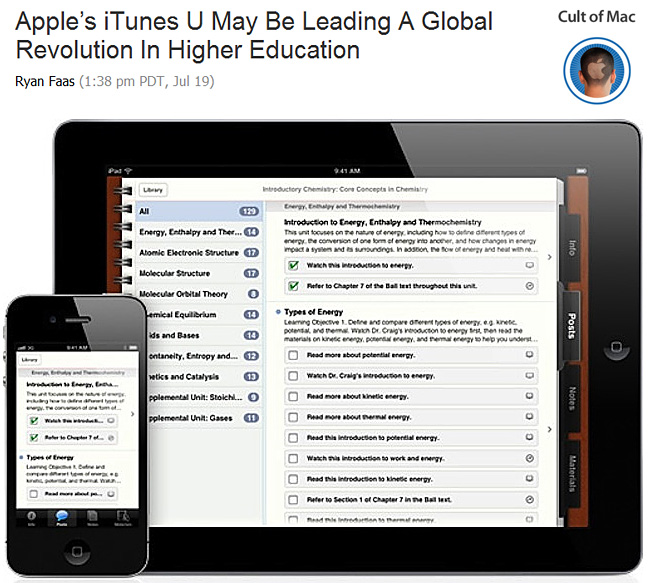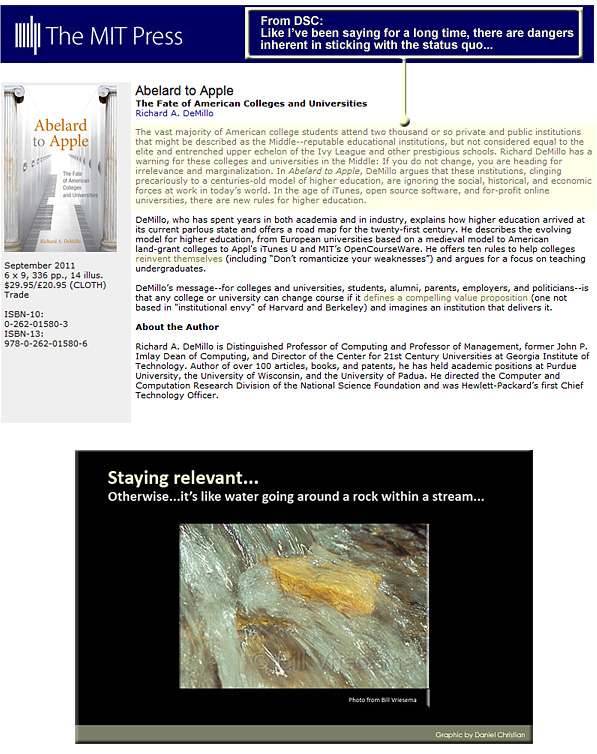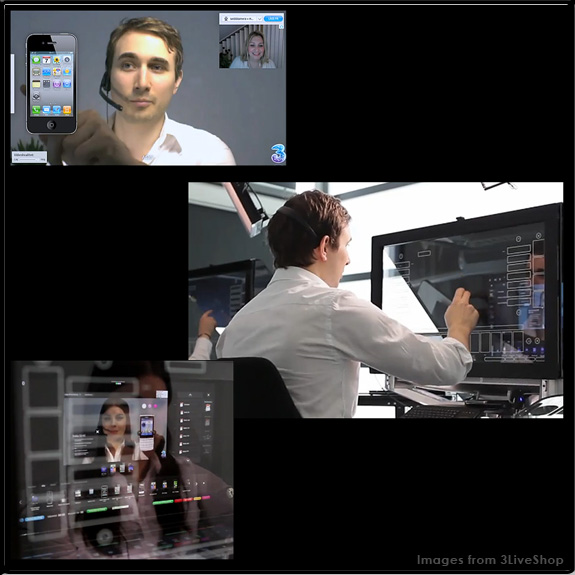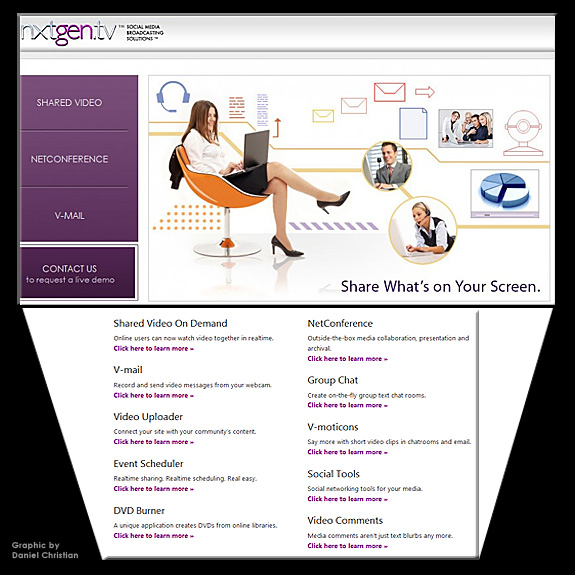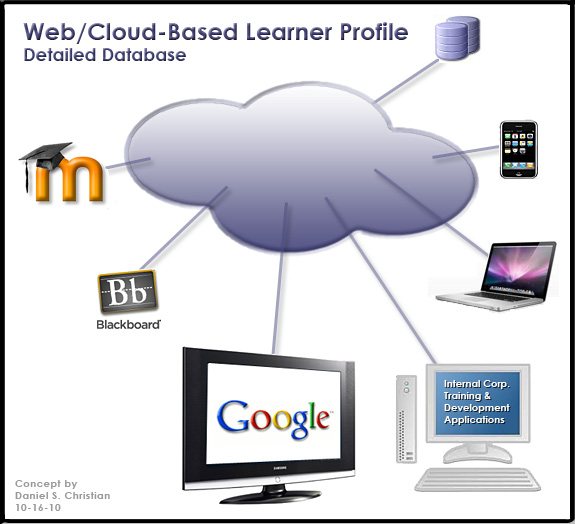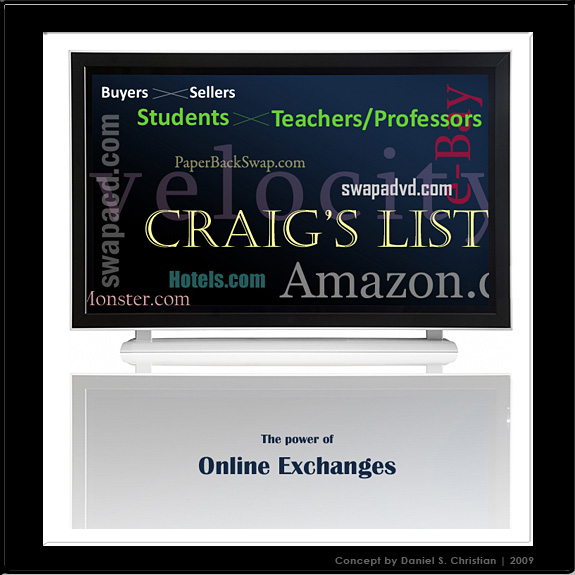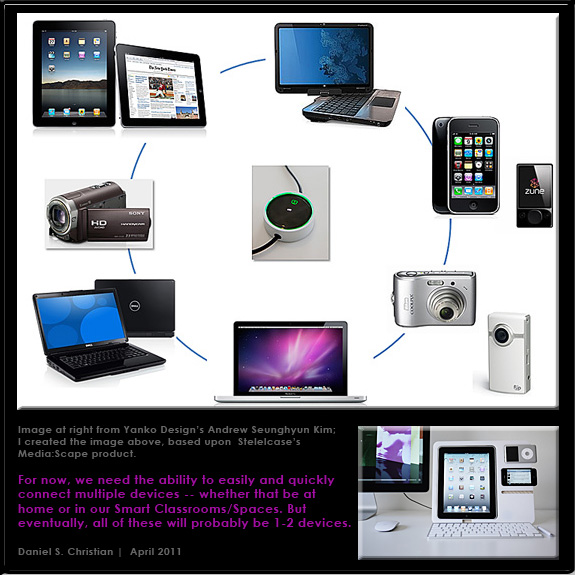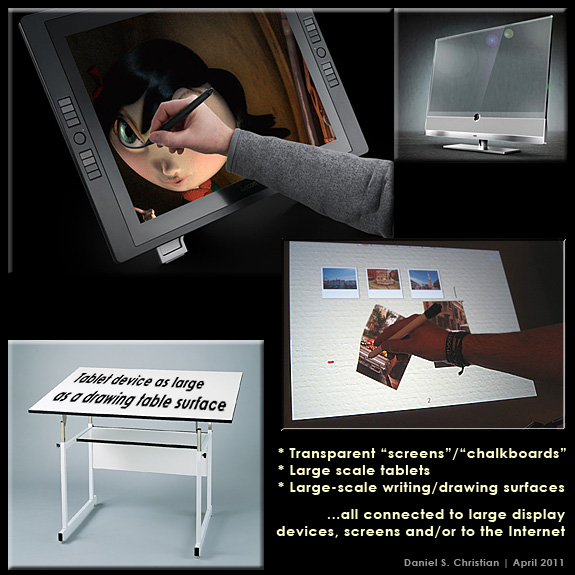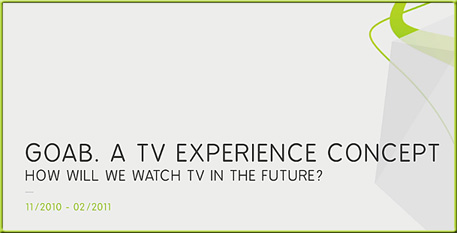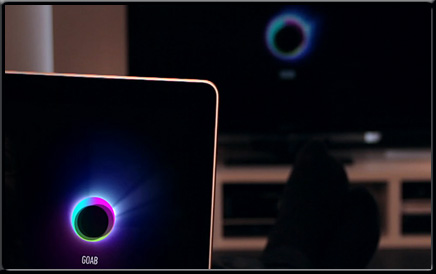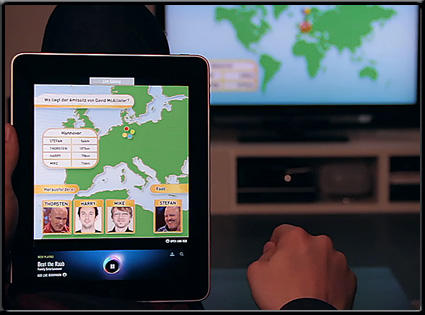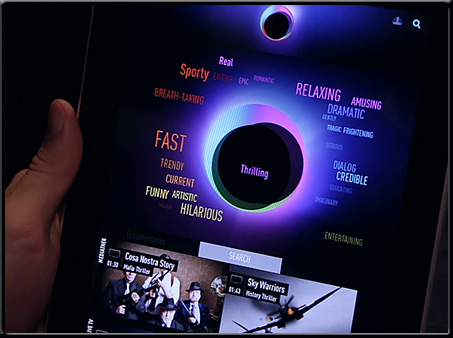
Apple Webcast Review: Getting to Know iTunes U — from edcetera.com by Jennifer Funk
Excerpt:
Apple just launched its three-part webcast series exploring the ways educators can use iTunes U. The webcasts
Part one of the series, which you can watch on demand from a Safari browser here, featured two Apple representatives and two educators who gave a general overview of the platform, offered examples of use in both high school and college classes, and answered educator questions.
If you don’t have an extra 45 minutes to watch the webcast, check out the highlights below.
iTunes U Course Manager hands on — from UCL – London’s Global University by Matt Jenner
Excerpt:
iTunes U is known as a wonderful platform for finding recorded lectures and podcasts from academics and institutions across the world. But recently it’s also become a location for entire courses, with students, multiple resources and some interaction all happening on devices such as the iPad. It’s all very Apple-based, which means anyone without this hardware can’t access it and thus it remains a little elitist. BUT there’s still some good reasons to look into it – and I hope this begins to explain why.
From DSC:
Thanks Matt for the helpful screenshots and overview of what iTunes U is offering these days!
If Apple were to devote more resources to create a fully-stocked CMS/LMS, they could add a significant piece to the overall ecosystem they continue to build. But this time, it would have significant benefits to those who want to learn and to reinvent themselves over time.
For example, what if:
- Faculty members worked with students to create the textbooks using iBooks Author?
- And the textbooks were free?
- iPads were used in BYOD type of settings and audio/video/text/graphics-based files could be “beamed” up to a larger presentation display? (Or all of the materials that they would need are already on the iPad from their orientation day and onward — and would constantly be updated throughout their collegiate days? In fact, a supplemental charge could provide the ability for alumni to subscribe to constantly updated streams of content as well.)
- CMS/LMS functions like discussion boards, wikis, blogs, podcasts, videoconferencing and more could be built into iTunes U?
Could be a potent learning setup as such cloud-based materials are available to everyone throughout the globe — at very attractive prices.
From DSC:
Apple has been putting together a solid ecosystem of hardware and software that allows for the creation and distribution of content. “Easy is hard” I like to say and Apple’s done a great job of creating easy-to-use devices and apps. They have a long way to go before iTunes U has all the built-in functionality needed to replace a Blackboard Learn or a Moodle type of CMS/LMS. But given their solid history of creating highly-usable hardware and software, they could deal a smashing blow to what’s happening in the CMS/LMS world today.
Plus, with Apple TV, Airplay mirroring, the growth of second screen-based apps, and machine-to-machine communications, Apple is poised to get into this game…big time. If my thoughts re: “Learning from the Living [Class] Room” come to fruition, Apple would be positioned for some serious worldwide impact on lifelong learning; especially when combined with the developments such as the use of MOOCs, AI and HCI-related innovations, learning agents, web-based learner profiles, and potential/upcoming changes to accreditation.
Too far fetched do you think? Hmmm….well considering that online learning has already been proven to be at least as affective as f2f learning — and in some studies has produced even greater learning outcomes/results — I wonder how things will look in mid-2015…? (That is, where is the innovation occurring?)
Addendum:
- Connected TV penetration to top 50% by 2017 — from worldscreen.com by Mansha Daswani
Excerpt:
SCOTTSDALE: ABI Research forecasts that more than 50 percent of television homes in North America and Western Europe will have Internet-connected TV sets by 2017, up from just 10 percent last year, while Blu-ray player penetration is expected to rise to more than 76 percent from about 25 percent. The report notes that the popularity of connected TV is not limited to developed markets—there have been increasing shipments to China, ABI notes.
. - Advertisers need to pay attention to connected TV [INFOGRAPHIC] — from Mashable.com
. - The future of TV is two screens, one held firmly in your hands — from FastCompany.com by Kit Eaton
Excerpt:
The connected TV, sometimes called the smart TV (and even branded as such by Samsung) is a growing phenomenon: TV makers are adding limited apps, Net connectivity, and even streaming media powers to their newer TVs in the hope they’ll persuade you to upgrade your newish LCD for a flatter, smarter unit. They’re desperate to, given how flat this market is. But according to new research from Pew, the future of TV may actually be a little more closely aligned with the notion of a “connected TV viewer,” an important distinction. Pew spoke to over 2,200 U.S. adults a couple of months ago and discovered that 52% of all adult cell phone owners now “incorporate their mobile devices into their television watching experiences.”
iTunes U Just Got A Killer New Feature — from edudemic.com by Jeff Dunn
Excerpt:
Available To You
The good news is that the social learning tools are available for ALL courses on iTunes U. So it’s now a free, socially-enabled, robust learning platform that has seen more than 700 million downloads. Hard to argue with that.
If you’re looking to take your classroom lectures and presentations online to share them with the world, this new development out of iTunes U could be just what you’ve been waiting for.
Nerds of the World, Unite! iTunes U Just Got Interactive — from The Atlantic by Megan Garber
Stanford is adding a social layer to its most popular class on Apple’s platform.
From DSC:
I’d rather see Apple, themselves, get more invested in — and committed to — helping design and integrate more tools inherent within the iTunes U ecosystem itself, capabilities such as:
- Web-based videoconferencing and collaboration tools
- Audio/visual-based discussion boards (use voice and video to submit an initial posting as well as to respond to someone else’s posting)
- Interactive whiteboards
- Application sharing
- Social networking/learning
- E-payments
- Etc.
Why iTunes U isn’t seeing massive adoption by universities — from edcetera.rafter.com by Sara Gaviser Leslie
From DSC:
Apple needs to decide how big they want iTunes U to get, how much to invest in it, and how much content creators/providers can do with it. Sara makes some solid points here — and Apple needs to develop their responses/action plans accordingly.
NMC launches iTunes U site — from the New Media Consortium
Excerpt:
The NMC is pleased to announce the NMC iTunes U Collection. This site is home to nearly a decade’s worth of content — all of it completely free and easy to find. We’re utilizing iTunes U to package and distribute all sorts of NMC media in forms that are both familiar and useful for educators and students. For example, every NMC publication, every keynote from dozens of NMC events, every NMC Horizon Report, plus podcasts, webinar archives, workshops, papers, conference programs, and communiqués are now all available at iTunes U > New Media Consortium.









